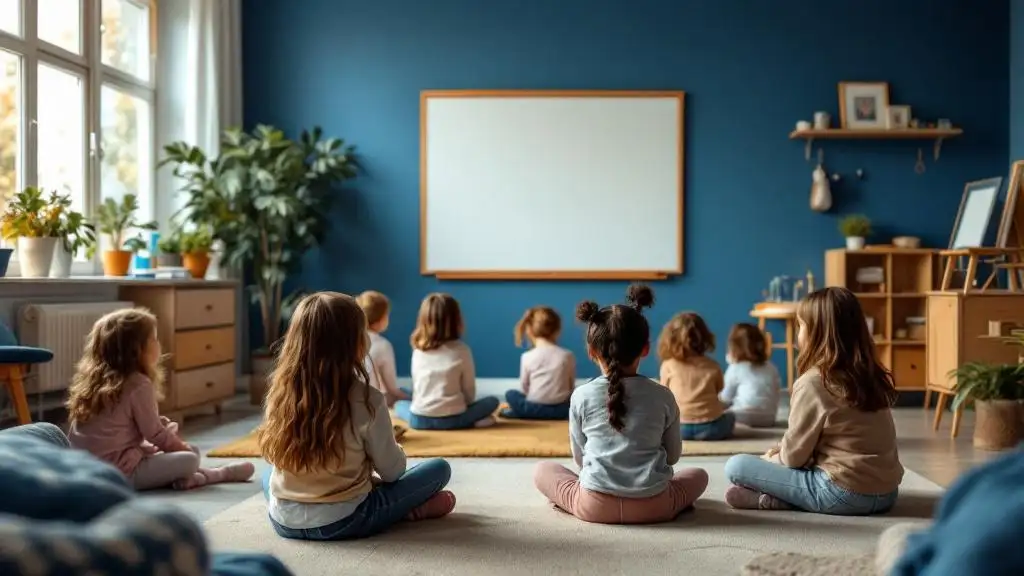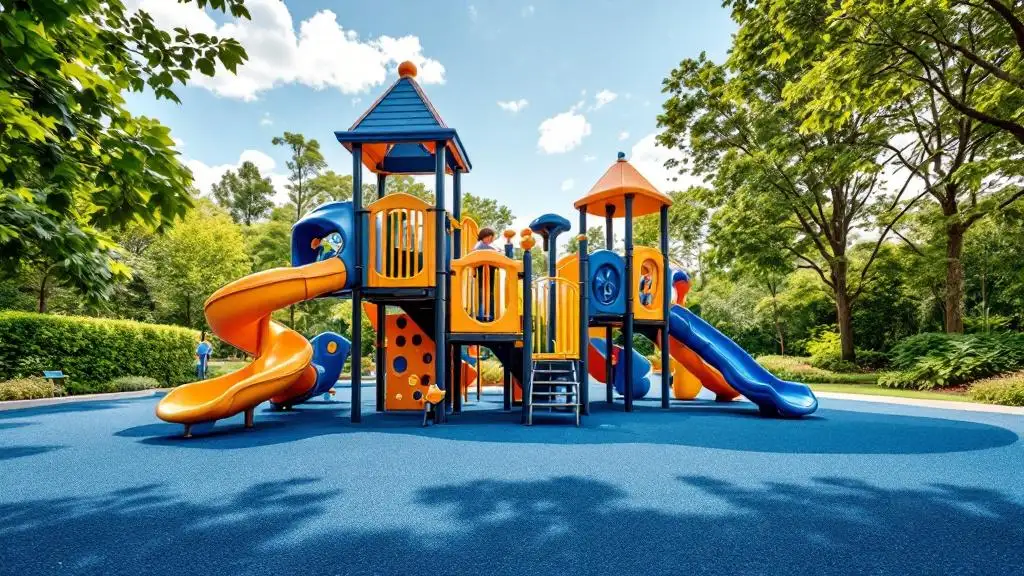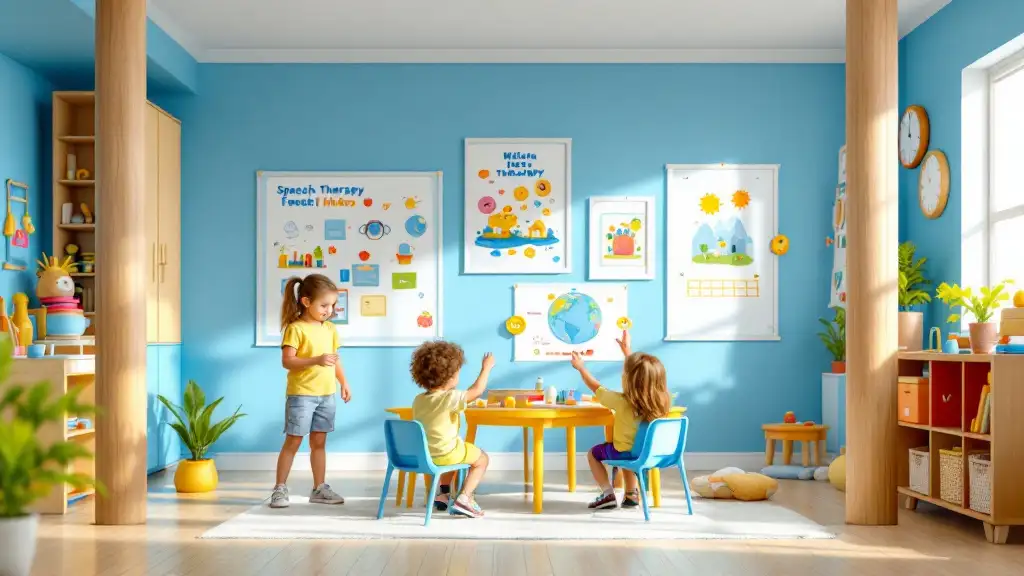
Empowering Adults Through Memory Enhancement Techniques
Memory challenges are common among adults with disabilities, including those with learning difficulties, ADHD, or recovering from brain injuries. Developing effective memory strategies is essential for improving independence, daily functioning, and quality of life. This article explores a comprehensive array of techniques, tools, and approaches grounded in research and clinical practice to help adults with disabilities optimize their memory capabilities.
Fundamental Understanding of Memory Types and Their Functions
How can different types of memory be explained to adults with disabilities, and what are their functions?
Memory is an essential cognitive process that allows individuals to learn, adapt, and function effectively. For adults with disabilities, understanding the different types of memory can help in choosing appropriate strategies to improve daily life.
There are four main types of memory: sensory, short-term, long-term, and prospective.
Sensory memory acts as a brief snapshot of sensory information like sights and sounds. It holds this data for a split second, enabling us to perceive and process sensory input instantly. This initial stage is crucial for forming impressions of our environment.
Short-term memory, also called working memory, temporarily stores and manipulates information needed for specific tasks. For example, remembering a phone number long enough to dial it or following multi-step instructions relies on short-term memory.
Long-term memory stores experiences, facts, and skills over extended periods. It is subdivided into episodic memory, which involves personal events like birthdays, and semantic memory, which includes general knowledge such as facts about the world. In addition, implicit memory involves subconscious skills, such as riding a bike or typing on a keyboard.
Understanding these memory functions assists adults with disabilities in developing coping strategies. For instance, using visual aids can support visual memory, while repetition can reinforce short-term memories. External tools like calendars or note-taking apps help compensate for long-term memory difficulties.
In summary, each type of memory plays a specific role in daily life. Recognizing their functions allows individuals and caregivers to implement tailored interventions, enhancing independence and quality of life.
Developing Tailored Memory Techniques — Internal and External Strategies
What are the most effective techniques and methods for developing memory strategies in adults with disabilities?
Effective memory strategies for adults with disabilities often combine personal, internal techniques with external tools and aids. This approach allows individuals to leverage their unique strengths and needs, making memory improvement more accessible and sustainable.
Internal strategies are centered around how information is processed and encoded. Techniques like elaborative rehearsal involve actively integrating new information with existing knowledge, creating meaningful connections. Forming associations or stories can provide mental links that make recall easier. Mental imagery, or visualizing information vividly, harnesses the brain’s natural preference for visual learning. Mnemonic devices, such as acronyms, rhymes, or spatial techniques like the method of loci (memory palace), are powerful tools to enhance encoding and retrieval.
External aids support memory through tangible tools and environmental modifications. Writing notes in planners, using flashcards, or maintaining digital checklists serve as external memory banks. Visual aids like mind maps, diagrams, or memory palaces help organize and visualize complex information. Assistive technology, including smartphone reminder apps, voice recorders, and specialized devices, provides reliable support especially helpful for those with significant memory impairments.
Creating organized physical environments—for example, placing important items in designated spots—reduces the cognitive load and prevents forgetfulness. Employing movement and multisensory techniques—such as associating information with sounds, smells, or tactile sensations—further enhance memory encoding.
Beyond these techniques, emotional engagement and meaningful associations play vital roles. Connecting new information with personal experiences or positive emotions facilitates deeper learning and easier retrieval.
Practice is crucial. Self-testing and spaced repetition help transfer knowledge into long-term memory, ensuring better retention over time. Additionally, maintaining general health through regular exercise, adequate sleep, and a healthy diet supports optimal brain function. These combined strategies form a comprehensive toolkit, adaptable to the diverse needs of adults with disabilities, fostering greater independence and confidence in their daily lives.
Implementing Practical Aids and Technological Tools
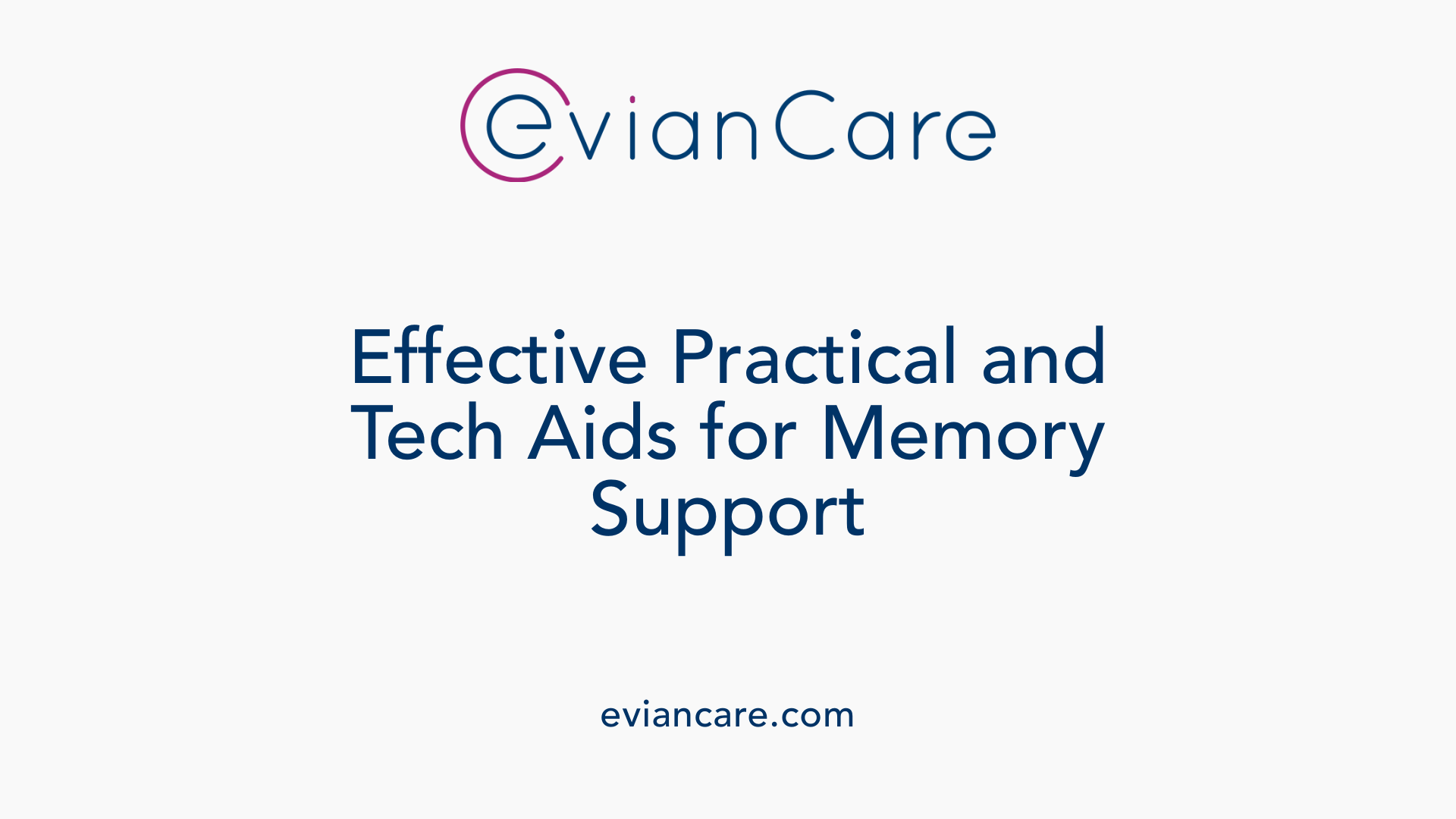
What specific memory aids and tools can support adults with cognitive challenges?
Adults facing memory difficulties benefit from a variety of practical aids and technological solutions that promote independence in daily life.
A fundamental approach involves external tools such as calendars, reminder apps, alarms, and memory journals. These help keep track of appointments, medications, and to-do lists, reducing forgetfulness. Using a physical memory book or planner allows organizing daily tasks visually and chronologically.
Assistive technologies have advanced significantly, providing additional support. Smart speakers like Amazon Echo or Google Home can give voice reminders, play audiobooks, and answer questions, aiding with routine management. Bluetooth locator tags help find misplaced items like keys or wallets quickly. Reminder devices, such as vibrating alert bracelets or device-embedded timers, serve as cues to prompt important activities.
Environmental modifications also play a crucial role. Labeling drawers, shelves, and medication boxes with clear, high-contrast labels helps users identify items easily. Creating organized, designated spaces for frequently used objects prevents misplacement. Signage with simple instructions or pictograms guides individuals through routines safely and independently.
Supporting independence involves leveraging both technology and environmental strategies. Digital tools can synchronize reminders across devices, while consistent organization fosters familiarity and confidence. Combining these aids with habits like routine checks and visual cues contributes to better memory support, enabling adults with cognitive challenges to perform daily activities more effectively and maintain their autonomy.
Utilizing Internal Strategies for Enhanced Recall
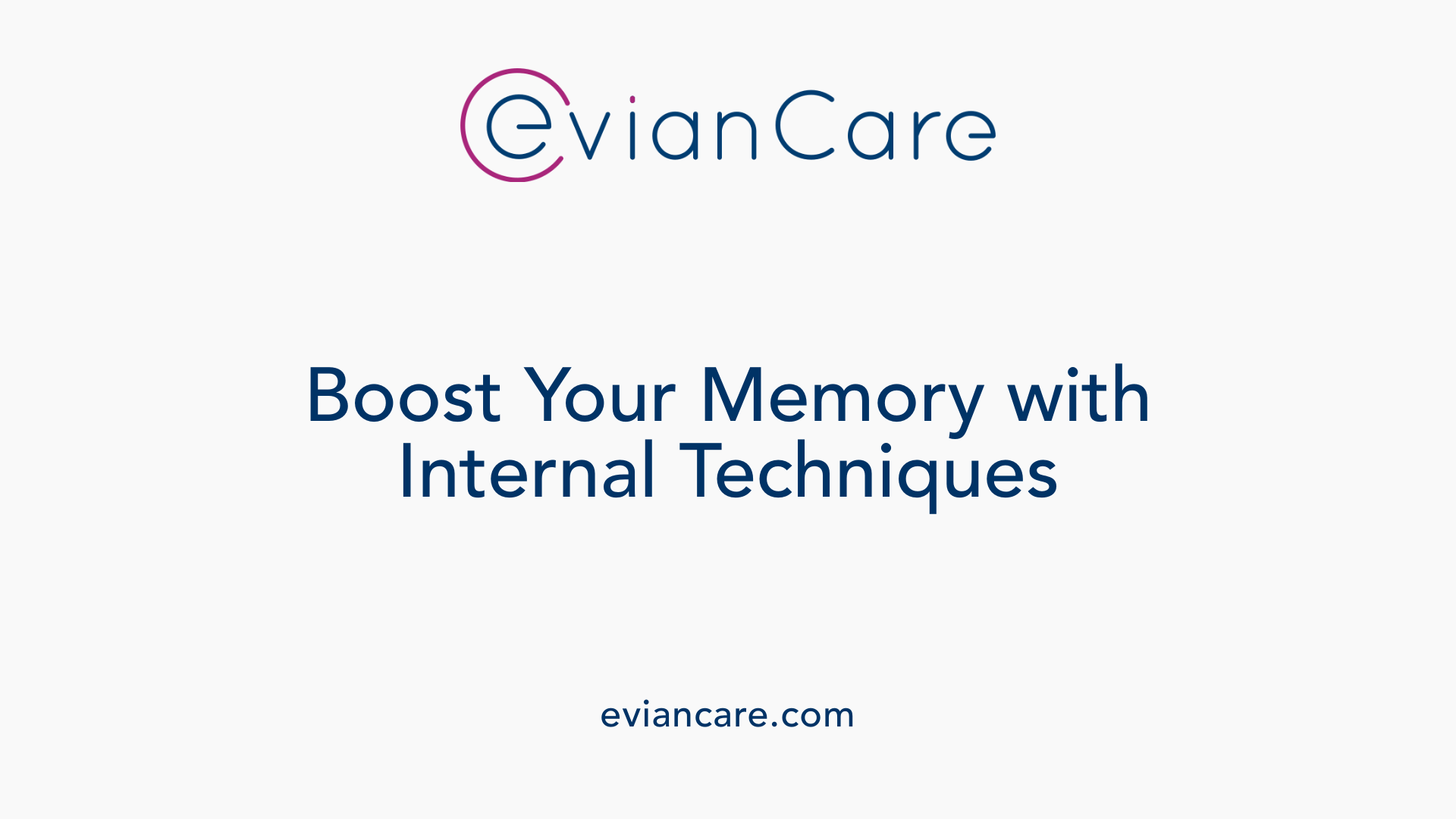
What practical exercises and approaches can help improve memory performance in adults with disabilities?
Adults with learning disabilities or ADHD often face challenges with memory, impacting their daily lives. To address these difficulties, a variety of internal strategies can be employed to improve memory retention and retrieval.
One effective method is mental visualization. Practicing the creation of vivid mental images linked to information can make facts or routines more memorable. For example, visualizing an object associated with a person's name or imagining steps involved in a task helps solidify memory.
Association techniques involving images and sounds are also beneficial. Linking a word or name to a mental picture or an auditory cue creates a connection that facilitates recall. For instance, associating a person's name with a distinctive feature or a related sound can enhance memory.
Repetition and chunking are foundational memory strategies. Repeating information aloud or writing it down reinforces neural pathways. Chunking involves breaking complex information into smaller, manageable units—such as dividing a phone number into segments—making recall easier.
Creating mnemonics and storytelling further supports memory. Using acronyms like "HOMES" to remember Great Lakes or developing silly stories around items or steps can make information stick. Rhymes, songs, or humorous phrases also boost encoding.
Retracing steps and mental review are practical approaches. Going through the sequence of events or visualizing yourself doing a task can reinforce memory and help identify where details might have been lost.
Beyond these internal practices, engaging in brain-stimulating hobbies—like learning a new language, playing chess, or practicing musical instruments—encourages neuroplasticity. Regular physical activities, such as walking, dancing, or Tai Chi, increase blood flow to the brain and release brain-supporting chemicals.
Practicing mindfulness through meditation reduces stress and enhances concentration, which benefits memory. Ensuring adequate sleep, typically 7-9 hours nightly, consolidates memories and restores mental clarity.
Social interaction and challenging oneself with new activities are also crucial. These efforts not only stimulate cognitive processes but also improve emotional well-being. Learning to use external memory aids—like planners, reminder apps, or visual cues—complements internal strategies and helps compensate for memory gaps.
Applying these practices regularly can lead to meaningful improvements in memory performance. Tailoring techniques to individual preferences and needs maximizes their effectiveness, making everyday functioning more manageable and less stressful.
Strategies to Improve Working Memory and Executive Functioning
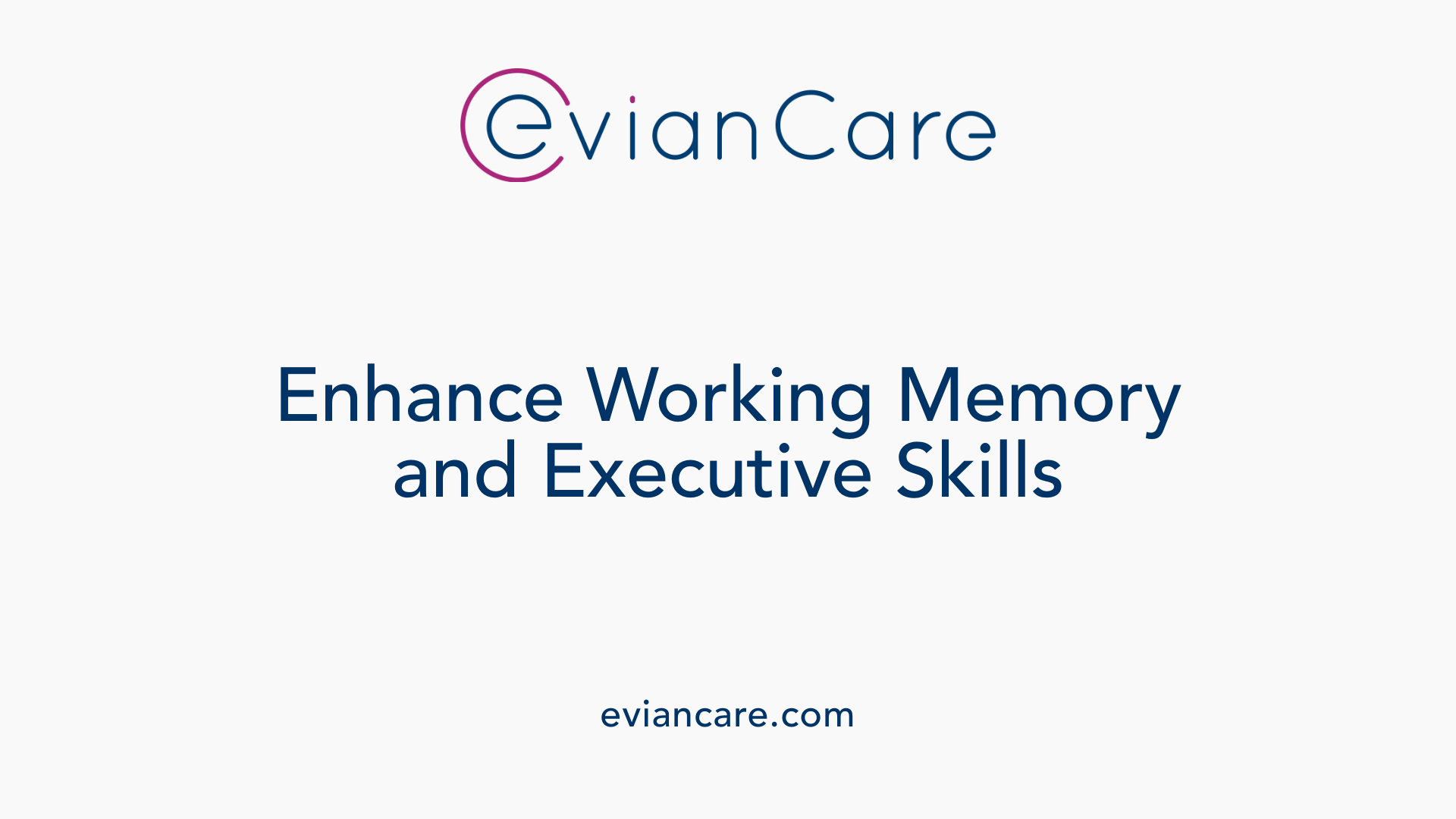
What strategies can enhance working memory and executive functioning in adults with disabilities?
Adults facing learning disabilities, ADHD, or brain injuries often struggle with memory and organizational skills. Improving these functions involves a combination of practical and cognitive techniques tailored to individual needs.
One effective approach is using external aids. Writing notes, making mind maps, and creating routines help offload mental demands. For example, maintaining a daily planner or checklists breaks down complex tasks into manageable steps, reducing cognitive load and enhancing task accuracy.
Organizing the physical and digital workspace is equally important. Keeping important items in designated spots prevents misplacement, while clutter-free environments support focus.
Task organization strategies include developing clear routines—like placing keys in the same spot every day—and using visual cues or icons to guide actions. These habits create consistency, making it easier to remember daily responsibilities.
Cognitive exercises form another pillar of support. Engaging in memory games, computerized brain training programs, and mindfulness practices like meditation help strengthen working memory and executive skills. Activities such as puzzle solving, stress reduction, and attention-gathering exercises promote neural pathways related to planning, problem-solving, and memory.
Self-regulation techniques contribute significantly. Managing stress through relaxation methods, practicing mindfulness, and setting realistic goals enhance mental clarity. Regular practice of these skills over time leads to better control over impulses and improved planning.
Crucially, tailoring these strategies to individual preferences and strengths maximizes their impact. For instance, visual learners may benefit more from diagrams and mind maps, while auditory learners might prefer recording and listening to reminders.
In summary, a blend of external organizational tools, structured routines, cognitive training activities, and self-regulation practices can significantly boost working memory and executive functioning. Consistency and personalization are vital to sustaining progress and achieving better daily functioning.
Memory Tips for Aging, Mental Health, and Cognitive Decline
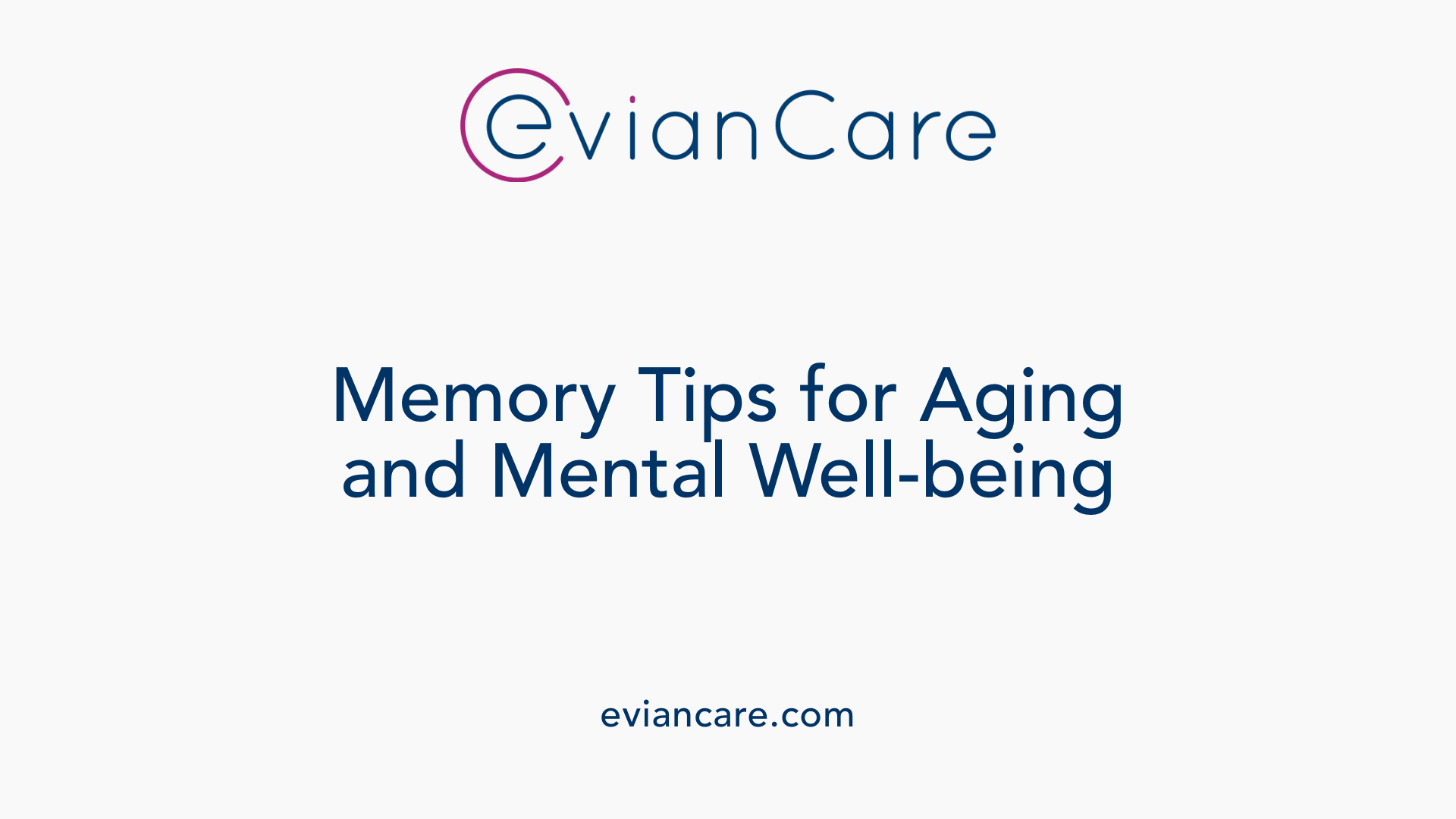
What tips are available for memory improvement related to aging, mental health, and cognitive decline?
Enhancing memory as we age or when facing mental health issues involves a combination of lifestyle choices and cognitive strategies. Regular physical activity, such as brisk walking, jogging, or other aerobic exercises, increases blood flow to the brain, supporting overall cognitive health and potentially slowing decline.
Staying mentally active is equally important. Engaging in reading, puzzle-solving, learning new skills, or hobbies like musical instruments encourages neural connections and can help maintain mental sharpness.
Maintaining social engagement is vital for cognitive vitality. Participating in community activities, maintaining friendships, and socializing with family can boost mood and reduce feelings of depression or loneliness, which are linked to memory problems.
Furthermore, prioritizing good sleep—ideally 7-9 hours per night—helps consolidate memory and restores brain function. A healthy diet rich in fruits, vegetables, whole grains, and omega-3 fatty acids also plays a significant role in brain health.
Managing chronic conditions such as high blood pressure, diabetes, and depression is necessary to prevent further cognitive deterioration. Consistent medical care and lifestyle adjustments can make a positive difference.
Lastly, employing external memory aids like calendars, checklists, and mnemonic devices, as well as internal strategies like creating mental associations, can help compensate for normal age-related memory changes and support ongoing cognitive well-being.
Supporting Recovery from Brain Injuries Using Memory Management Techniques
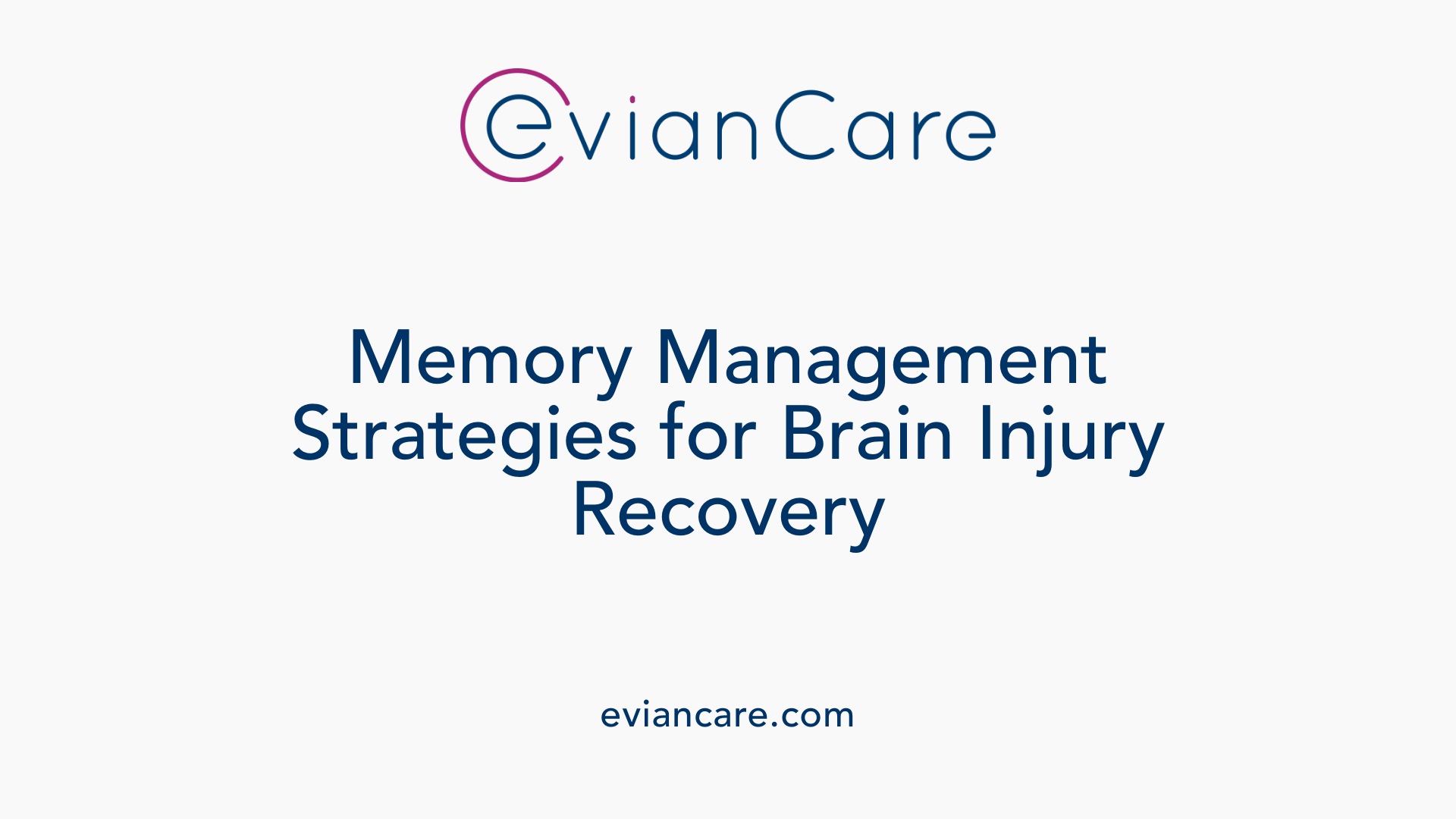
How can memory management techniques support individuals recovering from brain injuries?
Memory management methods play a crucial role in helping individuals regain independence and improve daily life after a brain injury. These techniques are designed to compensate for memory difficulties that often follow injury, such as trouble remembering recent events, appointments, or everyday tasks.
External aids are often the first step in organizing information and reducing cognitive load. Tools like notebooks, calendars, reminder alarms, labeled environments, and digital apps serve as external memory supports. For example, keeping important items in designated spots or using electronic reminders can help prevent forgetfulness.
Internal strategies also significantly enhance memory retrieval. Techniques such as mental visualization—forming vivid mental pictures—associations that link new information with familiar concepts, and chunking, which involves breaking information into smaller, manageable units, all strengthen encoding and recall.
Creating routines and adapting the environment are equally important. Consistently placing keys and phones in the same spots, simplifying tasks into steps, and minimizing clutter help reinforce memory pathways. Additionally, practices like rehearsal and repeated review further consolidate memories.
Lifestyle factors are foundational to memory recovery. Ensuring sufficient sleep (7-9 hours), engaging in regular physical exercise, and managing stress through mindfulness or relaxation techniques support brain health and memory function. These routines help the brain process and store information more efficiently.
Personalization is key. Tailoring techniques to individual strengths and preferences, and developing habits around use of visual aids and organizational tools, ensures sustained practice and success. Over time, these habits become natural, reducing cognitive strain and fostering confidence.
In summary, a combination of external supports, internal strategies, lifestyle changes, and personalized routines creates a comprehensive approach to memory rehabilitation. Regular application of these methods can help individuals recover more effectively, regain independence, and enhance overall quality of life after brain injuries.
Building a Foundation for Lifelong Cognitive Fitness
Developing effective memory strategies for adults with disabilities requires an adaptive, personalized approach leveraging both internal and external techniques. Combining behavioral methods like repetition, associations, visualization, and mnemonics with practical tools and technology can significantly enhance memory retention and retrieval. Awareness of different memory types informs targeted support strategies, while lifestyle factors such as sleep, diet, exercise, and social engagement sustain brain health over time. For individuals recovering from brain injuries or experiencing age-related decline, systematic use of memory aids and environmental modifications promotes independence and safety. Continuous education, facilitated by speech therapists, occupational therapists, and community resources, empowers adults with disabilities to optimize their cognitive potential, fostering resilience and lifelong learning.




